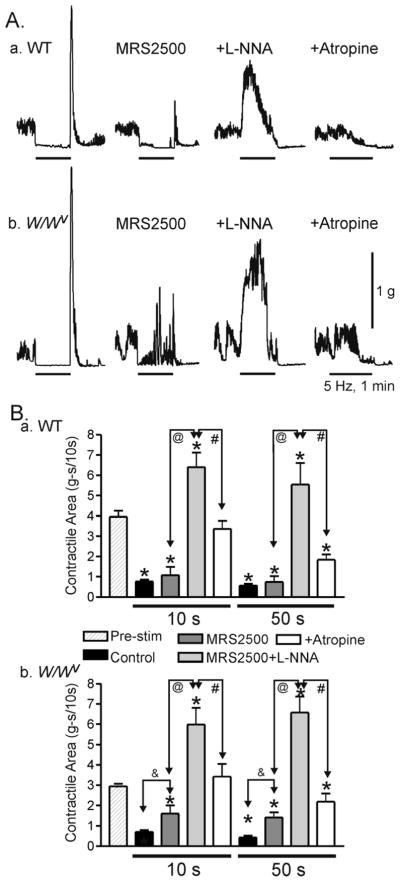Figure 6. Comparison of nerve-induced contractile responses in the WT and W/Wv mouse IAS in the absence of atropine.
(A) Sample traces showing the effects of MRS2500 and L-NNA on contractile responses elicited with 5 Hz EFS (10 s) in WT (Aa) and W/Wv (Ab) mice in the absence of atropine. Under control conditions EFS gave rise to relaxation (1st traces). MRS2500 did not significantly reduce nerve evoked relaxation in WT mice but it did in W/Wv mice (2nd traces). Following combined L-NNA and MRS2500 addition a large contractile response was seen in both animals (3rd traces). These contractions were abolished by atropine (1 μM; 4th traces). (B) Summary graph of the effects of blockers on nerve-induced changes in contractile activity during the initial 10s and the subsequent 50s of EFS in WT (Ba) and W/Wv (Bb) mice. Contractile area during EFS (5 Hz, 60s) is compared to the contractile area preceding EFS (“Pre-stim”, n=10 WT; n=6 W/Wv). All areas are normalized to area/10s. EFS gave rise to significant (*) relaxation in both WT and W/Wv mice (black bars, n=4 WT; n=6 W/Wv)). In the presence of MRS2500 (dark grey bars, n=4 WT; n=6 W/Wv) relaxation in WT mice was unchanged whereas it was significantly (&) reduced during both time periods of EFS in W/Wv mice. Combined addition of MRS2500 plus L-NNA (light grey bars, n=10 WT; n=6 W/Wv) resulted in significant (*) contraction in both animals during both time periods of EFS. Contractions were abolished by atropine (white bars, n=10 WT; n= 6 W/Wv) and a significant (*) relaxation was revealed during the latter 50s time period in both animals. Shown are mean values ±S.E.M.

